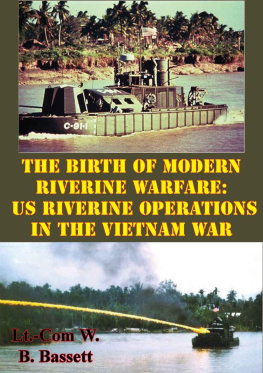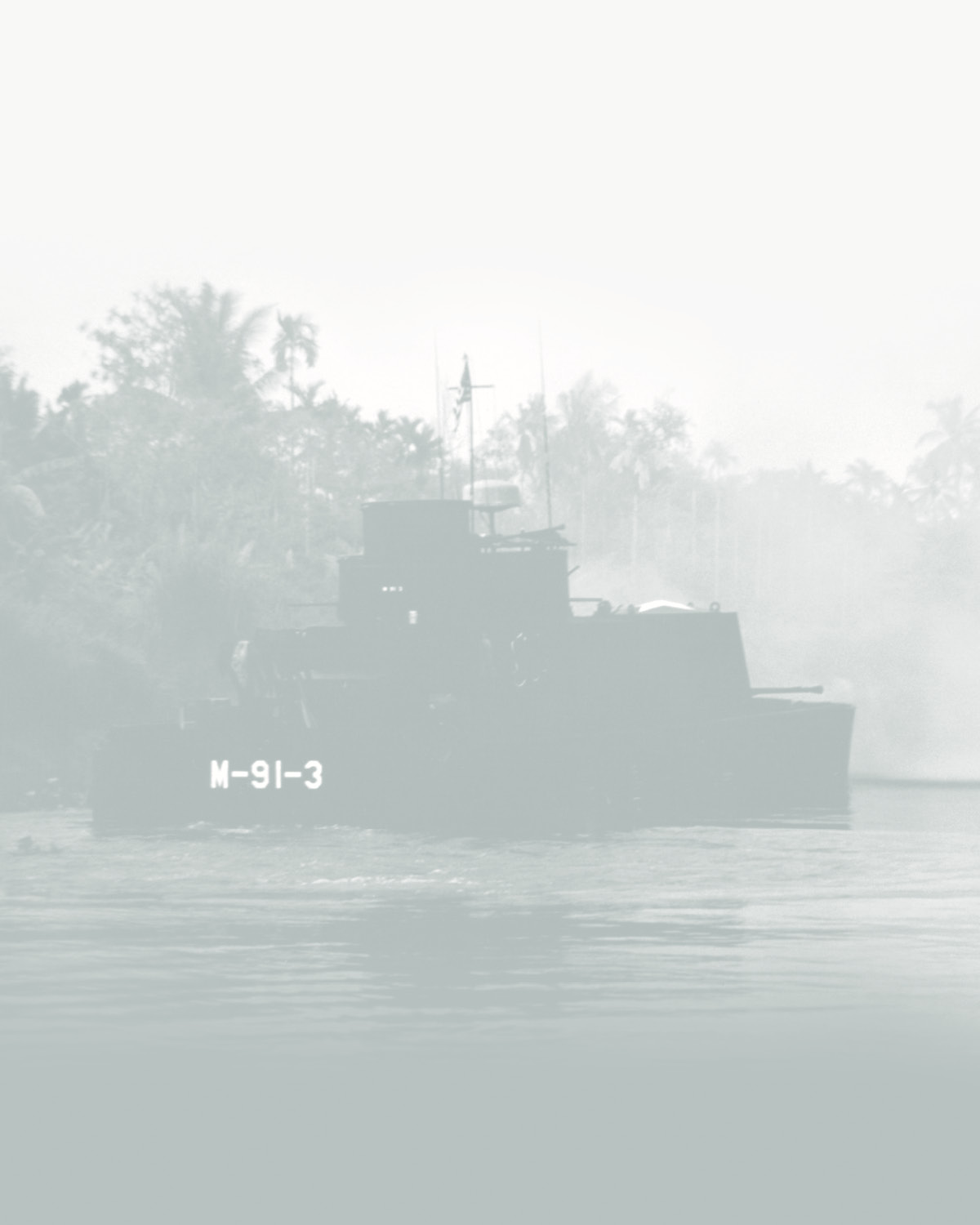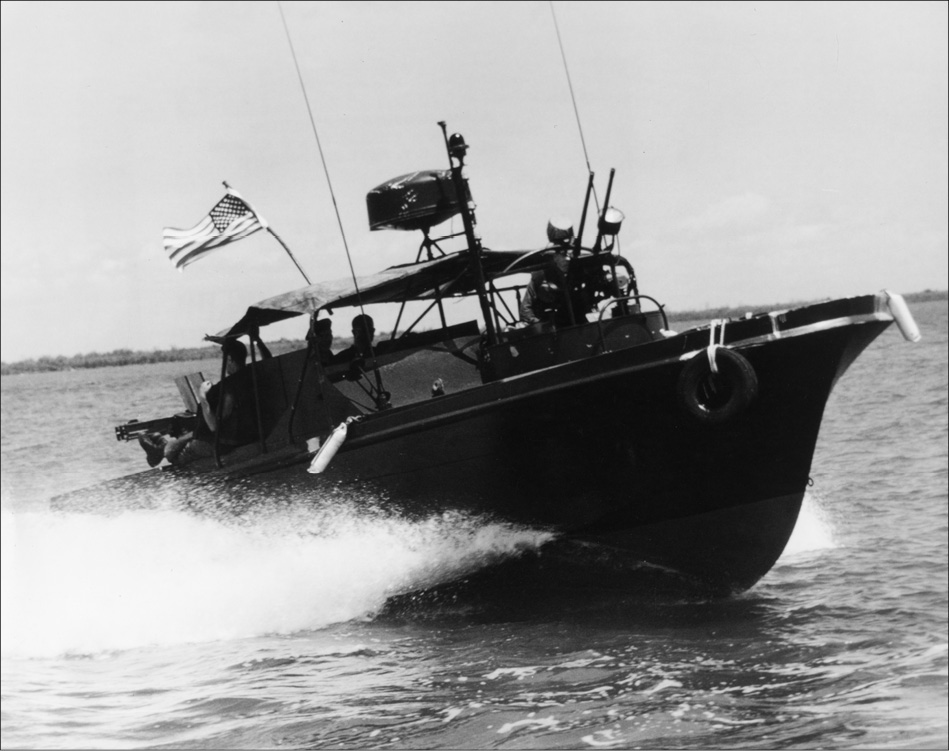2015 Naval Historical Foundation
All rights reserved.
No portion of this book may be reprinted without written permission from the Naval Historical Foundation.
Printed in the United States of America.
Published by
Naval History & Heritage Command
in partnership with the Naval Historical Foundation
805 Kidder Breese Street SE
Washington Navy Yard, DC 20374-5060
www.history.navy.mil
Book design by Dean Gardei and Christopher Dunham
U.S. GOVERNMENT OFFICIAL EDITION NOTICE
Use of ISBN
This is the official U.S. Government edition of this publication and is herein identified to certify its authenticity. Use of 978-0-945274-73-5 is for the U.S. Government Publishing Office Edition only. The Superintendent of Documents of the U.S. Government Publishing Office requests that any reprinted edition clearly be labeled as a copy of the authentic work with a new ISBN.
Library of Congress Cataloging-in-Publication Data
Marolda, Edward J.
Combat at close quarters : warfare on the rivers and canals of Vietnam / Edward J. Marolda and R. Blake Dunnavent.
pages cm. -- (The U.S. Navy and the Vietnam War)
ISBN 978-0-945274-73-5 (alk. paper) -- ISBN 978-0-945274-74-2
1. Vietnam War, 1961-1975--Riverine operations, American. 2. United States. Naval Forces, Vietnam. River Patrol Force--History. 3. United States. Navy. Task Force 116--History. 4. United States. Mobile Riverine Force--History. 5. Vietnam War, 1961-1975--Naval operations, American. I. Dunnavent, R. Blake, 1968- II. Naval History & Heritage Command (U.S.) III. Title. IV. Title: Warfare on the rivers and canals of Vietnam.
DS558.7.M364 2014
959.704345--dc23
2014049884
The paper used in this publication meets the requirements for permanence as established by the American National Standard for Information Sciences Permanence of Paper for Printed Library Materials (ANSI Z39.48-1984).
For sale by the Superintendent of Documents, U.S. Government Publishing Office
Internet: bookstore.gpo.gov; Phone: toll free 866-512-1800; DC area 202-512-1800; Fax 202-512-2104
Mail Stop: IDCC, Washington, DC 20402-0001
Introduction
T hroughout Vietnams history, inland waterways have been central to the countrys growth and development. They are where the population settled and cultivated and marketed their agricultural products. The fertile Red River valley in the north, the lush Mekong Delta in the south, and the many canals and rivers crossing those two prime growing areas brought economic prosperity and social cohesion. During the 1960s, the Mekong Delta was home to six million peoplenearly 40 percent of South Vietnams population. The well-irrigated paddies that covered the flat land produced most of the countrys rice, and the deltas 3,000 nautical miles of waterways enabled farmers to bring their harvests to market.
These same water courses have figured prominently in the military history of the Vietnamese people. When Chinese forces invaded and occupied northern Vietnam over the centuries, they exploited the fertility of the northern delta to feed both Chinese and Vietnamese populations. Harsh treatment of the Vietnamese people by the Yuan Dynasty under the Mongol Kublai Khan sparked an uprising in the 13th century, during which the legendary military leader Tran Hung Dao repeatedly defeated Mongol forces on the Red River and became a national hero.
In the 19th century, France took advantage of internal strife in Vietnam to occupy the country and establish an overseas colony that endured to the middle of the 20th century. Like the Chinese before them, the French recognized the importance of the rivers and canals in securing control of the country and exploiting its resources, especially rice production. Numerous battles between French naval forces and Vietnamese independence fighters occurred along and on inland waters.
Japan occupied Indochina in World War II with the collusion of the Vichy French government that collaborated with the Axis powers. Determined to reestablish its Asian colony after Japans defeat in August 1945, the Free French government of General Charles de Gaulle used Vietnams rivers and canals to push troops far inland. By the end of 1946, French military forces were in firm control of the Red River and Mekong River deltas as well as the countrys main navigable arteries.
The First Indochina War broke out when Ho Chi Minhs Viet Minh independence movement, which consisted of communist and noncommunist nationalists, rose up in revolt. Hos troops destroyed French forces on the frontier with China and secured the jungles and mountains of northern Vietnams interior during the early 1950s. The Viet Minh, however, were unable to break French power in the two delta regions. The French used the inland waterways as barriers to Viet Minh advances and as highways to quickly move ground and naval forces from one threatened area to another.
French units of heavily armed and armored river craft, most of them surplus World War II U.S. amphibious craft, prevented Viet Minh forces from seizing Vietnams primary food-producing regions, population centers, and ports. But in May 1954, the Viet Minh defeated more than 10,000 French Union troops at Dien Bien Phu, an outpost located deep in the mountains and jungles of northern Vietnam and far from the countrys inland waterways. The rout of the French armys most elite forces at Dien Bien Phu led ultimately to Frances withdrawal from Indochina, leaving the Democratic Republic of Vietnam (North Vietnam) under Ho Chi Minh in control of the northern regions of the country. The Geneva Conference of 1954, convened by the world powers to bring peace to Indochina, established the division between North Vietnam and South Vietnam at the 17th parallel.
The survival and future growth of the fledgling government of the Republic of Vietnam (South Vietnam) depended heavily on its ability to secure the nations waterways, especially the Mekong Delta and the rivers that allowed access to the sea from the capital, Saigon. From 1955 to 1965 South Vietnam, with U.S. military assistance, developed a River Force to protect river transportation and commerce from attacks by indigenous Communists, the Viet Cong (VC).
In 1959, North Vietnam decided on armed struggle to destroy the government of South Vietnam and gradually stepped up attacks on American military advisors. In January 1960, the female Communist leader Nguyen Thi Dinh sparked the first serious uprising against the South Vietnamese government. Her insurgents stormed a number of municipal buildings at Ben Tre, the capital of Kien Hoa Province in the Mekong Delta, and assassinated 43 public officials. The stunning action served to inspire Communist guerrillas throughout the war.
A river patrol boat (PBR) speeds along a South Vietnamese river. NHHC K31134
Political chaos in Saigon, the deteriorating security in the countryside in 1963 and 1964, and the North Vietnamese attack on destroyer Maddox (DD-731) in the Gulf of Tonkin in August 1964 prompted major U.S. military intervention into South Vietnam in 1965. To stem the infiltration of weapons, ammunition, and other war materials into South Vietnam by sea, Commander U.S. Military Assistance Command, Vietnam (MACV) established the Coastal Surveillance Force (Task Force 115) under Chief Naval Advisory Group (later subordinated to a new organization, Naval Forces, Vietnam [NAVFORV]) on 30 April 1965. The United States also deployed U.S. Navy and U.S. Coast Guard destroyer escorts, ocean minesweepers, cutters, coastal craft, and patrol planes along the countrys 1,200-mile coastline. The eventual success of this anti-infiltration operation, called Market Time, forced North Vietnam to transport munitions via inland routes through Laos and via merchant ships into the port of Sihanoukville in supposedly neutral Cambodia.














